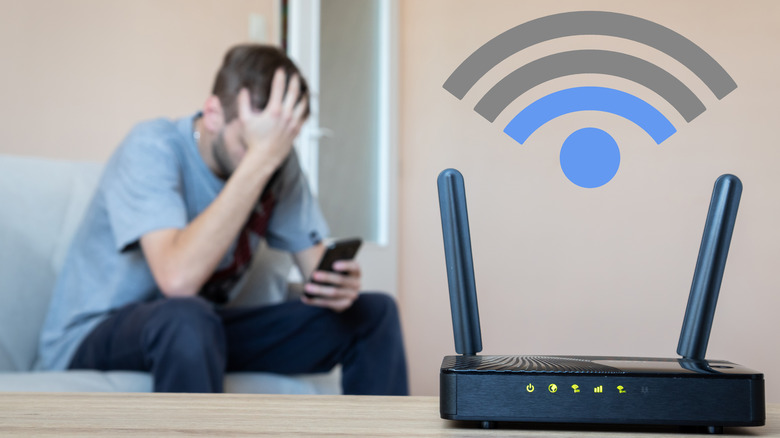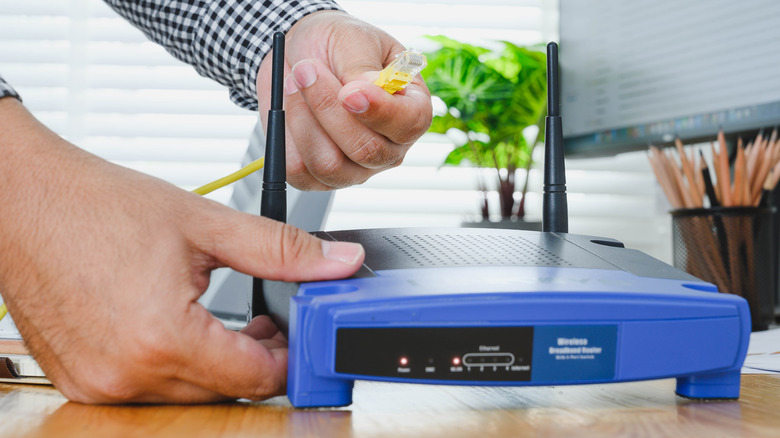The Best Place To Put Your WiFi Router For The Highest Speeds
For as much as many of us rely on Wi-Fi, we still occasionally run into signal problems. Whether due to major digital traffic jams from a crowded convention or unwittingly setting up shop in a room that's effectively a human-sized Faraday Cage, if you haven't had to deal with a spotty connection yet, you definitely will eventually.
But what about when we have Wi-Fi signal trouble at home?
A number of different elements can slow down or interrupt your wireless fidelity, like thick walls and conflicting signals from other electronic devices, such as the Google Cast devices that caused routers to drop Wi-Fi connections. But there are ways to mitigate these potential problems — and you won't necessarily have to pay for any extra gear, like a Wi-Fi extender or powerline kit to do it. Because as with many things in life, it mostly comes down to location.
The real trick is knowing where the most effective spots are, and how to best take advantage of both your router and your home's physical layout.
Re-routing your router
When placing (or relocating) your router to optimize its effectiveness, the most obvious thing to look out for is any kind of physical barrier. Walls, furniture, and the like can dull the strength of the signal — or outright block it in the case of water (so definitely avoid fish tanks). Nearby electronics can also disrupt the signal (particularly microwaves), so try to avoid placing it next to many — or possibly any — other devices if you can. Obviously, when you're dealing with a multi-room home it'll be impossible to avoid having the signal pass through walls, but in general, you should find a spot for the router that places as few physical obstacles between it and other areas where you intend to use the Wi-Fi (via CNET).
Less obvious is the router's relation to the entire living space. We often have a tendency to place them off to one side or in a corner (guilty), but these are generally some of the worst spots because a Wi-Fi signal is omnidirectional. So if you want the Wi-Fi to be able to reach as much of your home as possible, you'll want to put it in the middle of everything. Similarly, if you can manage it you'll also want to place the router closer to the ceiling. Or, depending on the layout of your space, even the second floor is ideal.
Think of your router's signal as a sphere rather than a cone, and you should have a much easier time picking a more effective location.

